Nathaniel Vallois explores the sensuousness and raw force of the idiosyncratic French virtuoso, whose long battle with inner demons had a tragic conclusion

Discover more Featured Stories like this in The Strad Playing Hub
This article appeared in the December 2010 issue of The Strad
When Christian Ferras threw himself out of a Paris window in 1982, aged 49, he put an end to the years of emotional torment that had caused his dazzling career to disintegrate. His ascent to fame had been a seamless transition from child prodigy to mature artist, and for most of the 1950s and 60s he was one of the world’s preeminent violinists. With pianist Pierre Barbizet he formed one of the great duo partnerships, and he was Karajan’s anointed soloist for a series of famous recordings. Yet as he reached this zenith an insidious dependency on alcohol gnawed at him. Bouts of depression intensified and he became an increasingly fallible performer. He taught at the Paris Conservatoire from 1975, but his last few years were a terrible struggle with his inner demons punctuated by occasional, short-lived comebacks. The cause and manner of his death became nearly taboo subjects and for a time his reputation seemed in danger of slipping into oblivion, but studio and live recordings have re-established his stature as a supreme violinist with a uniquely moving voice.
CHRONOLOGY
1933 Birth in Le Touquet on 17 June
1942 First solo performance with orchestra in Nice
1944—6 Studies in Paris Conservatoire with Rene Benedetti
1947 Begins studies with George Enescu. First recordings
1948 Wins joint first prize in the Scheveningen International Competition
1949 Wins the Thibaud Competition. Forms duo with Pierre Barbizet
1951 First tour of Germany
1959 First US tour
1964—7 Concerto recordings with Karajan
1975—82 Professor at the Paris Conservatoire
1982 6 May: last major concert with Barbizet in Paris. 25 August: last recital. 14 September: Ferras commits suicide
PEDAGOGICAL BACKGROUND
After initial lessons with his father, Ferras’s first professional teacher was Charles Bistesi, at the Nice Conservatoire. He had already gained considerable concert experience when he moved to study at the Paris Conservatoire in 1944, in the class of Rene Benedetti. While already enjoying a flourishing career upon graduation in 1946, he continued to draw on varied teaching influences, from the Russian Boris Kamensky, and especially from George Enescu, who made the deepest mark on him.
TECHNIQUE AND INTERPRETATIVE STYLE
Ferras was a formidable natural talent and a highly imaginative virtuoso. One of the joys of watching him play on film is observing his creative fingerings and bowings. His idiosyncratic bowing technique, with its exaggeratedly raised right elbow and wrist, and awkward finger positioning, worked wonders for him, but he would tell students not to do as he did.
The fascinating paradox of his art was its amalgamation of limpid elegance and fire, sensuousness and raw visceral force. For all their personalised fervour, his interpretations had integrity and were attuned to the composer’s spirit. In more rhapsodic works he took liberties with the score, but these enhanced the music’s atmosphere. His Enescu Sonata no.3, for example, is very different from the composer’s, and perhaps even more vividly folkloric.
SOUND
Ferras was an intensely lyrical player. Diversified in texture rather than volume, his sound was by turns delicate and explosive, and the deep and high registers were distinctly characterised. His double-stopping and chordal play glowed magnificently. Like Menuhin and Gitlis, his tone and expressive language recall Enescu’s soulful charge and parlando quality. As one of the last great exponents of the emotive portamento, he could make his violin sigh and weep, but his sound also had a luminous quality in the best tradition of French refinement.
REPERTOIRE
The breadth of works Ferras convincingly interpreted was exceptional. He gave marvellous accounts of Bach and of Tartini’s ‘Devil’s Trill’ Sonata, albeit on relatively old-fashioned terms, and he was a leading interpreter of Beethoven. From the Romantic canon, he was as much suited to the German lineage of Schumann and Brahms as to the French and Belgian repertoire. He was an important exponent of 20th-century music, by Enescu, Berg, Stravinsky, Sibelius, Bartók, Honegger, Prokofiev, Milhaud and Schoenberg. Works by lesser-known composers were written for and premiered by him. He played everything from memory, except Bartók’s Second Sonata.
STRENGTHS
Beyond his superlative gifts as a violinist, his innate good taste and grasp of idiom, Ferras’s expressive power was extraordinarily vivid. He conveyed like very few others an overwhelming sense of living the music, body and soul.
WEAKNESSES
Ferras’s sometimes highly strung vibrato isn’t to everyone’s liking. His playing didn’t lack finesse, but in some music his style was rather portly and he wasn’t a specialist in the genre of light-footed miniatures. Inevitably, live recordings from his declining years expose vulnerable intonation, once so pure.
INSTRUMENTS
For his early concerts and recordings, Ferras used violins by Max Milland and Vuillaume, but his most significant instruments were the 1721 ‘President’ and the 1728 ‘Milanollo’ Stradivaris. His favoured bows were by Dominique Peccatte, Ouchard and Sartory.
RECORDINGS
Ferras made many marvellous recordings, and there is also a treasure trove of unissued live performances. His remarkable first record, made at the age of 14, of the scarcely known, colourful Elizalde Violin Concerto, is already stamped with his hallmark blend of sensuous glamour and acute emotional depth. The Beethoven Concerto from his 1951 German debut is astonishingly mature and profound, crowned by a prayer-like Larghetto. Ferras sings like an angel of compassion in Berg’s Concerto, but his later, angst-filled playing is most blisteringly conveyed in a 1966 live Brahms Concerto. The Sibelius with Karajan is admired, but more poignant still is a filmed performance, in which Ferras’s sweat and tears mingle at the end of the slow movement. Ferras was not satisfied with his late recording of Bach’s Sonatas and Partitas, yet it contains much towering playing, particularly in the C major Sonata. The sonatas with Barbizet are exceptionally fine. The Beethoven set is a leading reference, for its balance of Classical refinement and Romantic fervour. The Schumann D minor, Lekeu and Fauré E minor sonatas are especially moving, while the Debussy and Enesco’s Third, along with Ravel’s Tzigane, are kaleidoscopic flights of fantasy. Finally, Ferras’s early recording of Chausson’s Poème reveals a deep affinity for the composer’s darkly voluptuous world, and his performance in the Concert for violin, piano and string quartet is a haunting encapsulation of his art.
RECOMMENDED RECORDINGS
Elizalde/Rodrigo Concertos TESTAMENT SBT 1307
Beethoven Violin Concerto URANIA 178
French Violin Masterpieces: Chausson, Ravel, Debussy, Fauré, Honegger DECCA 468 496-2
Les introuvables de Christian Ferras EMI 5 74872 2 (FIVE DISCS)
Beethoven Sonatas EMI 7432 4 83423 2
Berg Violin Concerto CLAVES 2516
Sibelius/Stravinsky Concertos, Franck Sonata EMI DVD 4 90444 9
Schumann D minor Sonata and other works BRILLIANT CLASSICS 93791
Brahms Violin Concerto INA MEMOIRE VIVE IMV 007
Chausson Concert EMI 7 64365 2
The Strad is offering customers the chance to purchase print magazines from its archives, while stocks last. Get your copy here before they’re all gone!
Read: Christian Ferras: The SWR Recordings
Watch: Christian Ferras plays Brahms Sonata no.3
Discover more Featured Stories like this in The Strad Playing Hub
The number one source for playing and teaching books, guides, CDs, calendars and back issues of the magazine.
In The Best of Technique you’ll discover the top playing tips of the world’s leading string players and teachers. It’s packed full of exercises for students, plus examples from the standard repertoire to show you how to integrate the technique into your playing.
The Strad’s Masterclass series brings together the finest string players with some of the greatest string works ever written. Always one of our most popular sections, Masterclass has been an invaluable aid to aspiring soloists, chamber musicians and string teachers since the 1990s.
American collector David L. Fulton amassed one of the 20th century’s finest collections of stringed instruments. This year’s calendar pays tribute to some of these priceless treasures, including Yehudi Menuhin’s celebrated ‘Lord Wilton’ Guarneri, the Carlo Bergonzi once played by Fritz Kreisler, and four instruments by Antonio Stradivari.

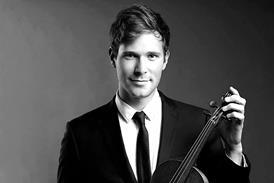
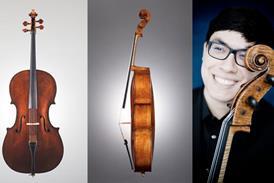
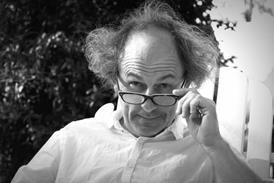
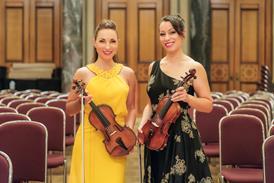
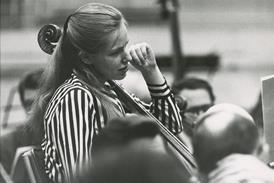



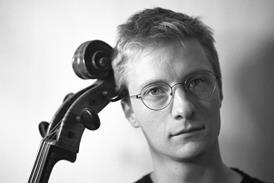

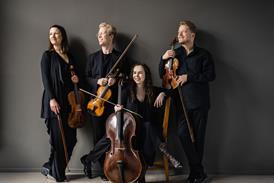


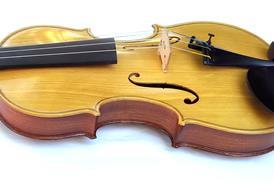























No comments yet